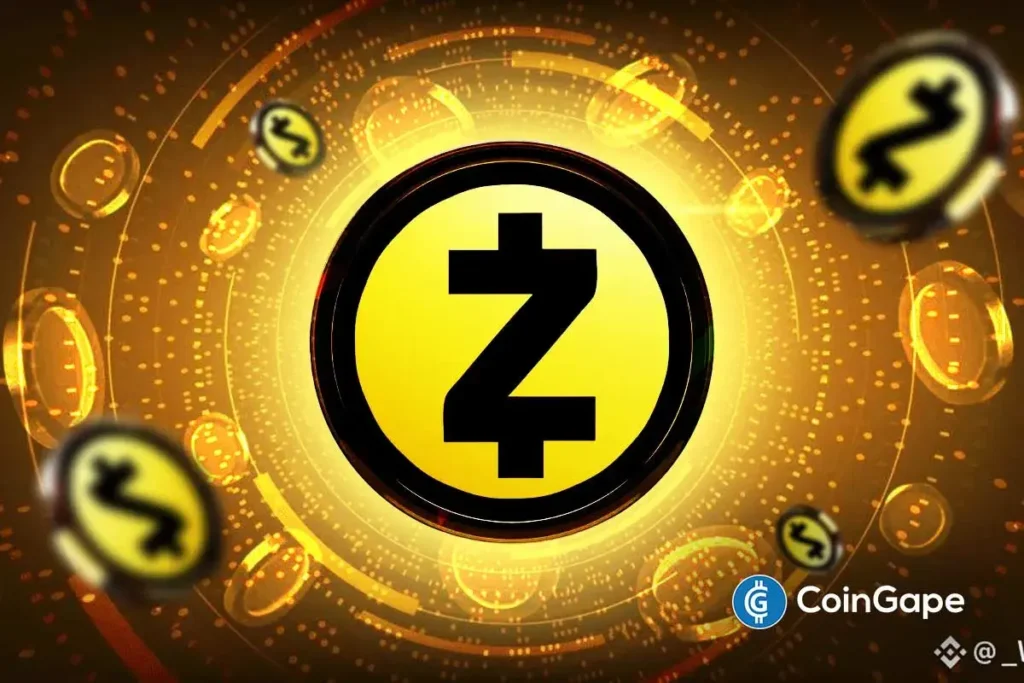Zcash Price Drops 10%: Analyzing the Recent Market Trends
Zcash (ZEC), the popular privacy-focused cryptocurrency, has experienced a significant downturn, plummeting over 10% in just 24 hours. This decline comes on the heels of an extraordinary surge where ZEC prices escalated more than 500% within a month. As the cryptocurrency market continues to fluctuate, it’s essential to understand the reasons behind this sudden price correction and what it means for investors.
Causes Behind the Price Decline
The recent drop in Zcash’s value can be attributed to profit-taking by major investors, including whales and traders. Following an impressive parabolic run, ZEC has now entered what many are calling a distribution phase. Several factors have contributed to this price tumble, not the least of which is the anticipation of profit booking. Zcash’s bullish run had largely defied broader market trends, culminating in a strong bullish sentiment that encouraged early investors to take profits.
Key events fueled Zcash’s recent rally, including Grayscale’s announcement of a private placement offering for its Zcash Trust for eligible accredited investors. In addition, Hyperliquid’s decision to list ZEC with leverage options caught the attention of traders looking to capitalize on its momentum. Notable market analysts, including BitMEX co-founder Arthur Hayes, further stoked excitement by projecting a staggering future Zcash price target of $10,000. This led to a rush among investors, contributing to a single-day spike of over 30%.
Distribution Phase Insights
Despite the euphoria surrounding Zcash’s pricing, experts have begun to express caution. Many believe ZEC is currently in a distribution phase, especially following the halving event that took place last November. This phase typically indicates that a security has reached saturation among buyers, causing a decline in price as those in profit look to cash out. CryptoQuant CEO Ki Young Ju illustrated this point recently, suggesting the existence of a distribution pattern supported by Zcash’s Spot Volume Bubble Map.
Interestingly, metrics indicate that retail investors have started to dominate Zcash purchases. This could signify a shift in buying patterns, but it also raises questions about whether the supply from early investors will outpace demand from newcomers. Ju himself noted a recent shift in his approach to Zcash, stating publicly that he has begun to divest substantial portions of his holdings in light of the recent bullish activity.
Market Reactions to Selling Signals
Zcash’s tangible price drop of 11% sees it trading at approximately $322.52, with fluctuations between $322.78 and $371.59 in the past 24 hours. The rapid decline in trading volume, down by 50%, underscores waning interest among traders and investors alike. While ZEC’s gains had prompted increased speculation, this rapid shift in momentum suggests a readiness on the part of many investors to secure profits before potential further corrections.
One indicator of overvaluation is the Relative Strength Index (RSI), which recently peaked at 80.88, suggesting that Zcash was overbought. This aligns with broader patterns observed in the derivatives market, where CoinGlass data highlighted unprecedented selling activity. ZEC futures open interest saw a substantial decline, with falls of 14% to $462.42 million in just 24 hours—a notable shift in sentiment.
The Derivatives Market and Traders’ Strategy
With the ZEC futures market in flux, traders have been actively responding to signals that indicate profit-taking is prudent. The futures open interest on popular exchanges such as Binance, Bybit, and KuCoin dropped significantly, with reductions of almost 13%, 20%, and 30%, respectively. Such metrics present a clear picture of how traders are navigating this turbulent period. The sell-off in the derivatives markets suggests that many see the opportunity to lock in profits rather than ride potential future volatility.
As the landscape becomes increasingly dynamic, the strategies employed by traders become even more crucial. Understanding broader market conditions and investor sentiment can help new and veteran investors alike navigate their Zcash investments during this uncertain phase.
Conclusion: Zcash’s Future Outlook
In summary, Zcash’s decline over the past 24 hours is a reflection of profit-taking behaviors following a significant upward trend. While recent catalysts have instigated a rapid rise in the asset’s value, current indicators suggest that the market is now shifting toward a more cautious and reactive stance.
Investors, especially those considering entry into Zcash, must closely monitor price movements and market sentiment in the coming days. Trading volume and volatility in the derivatives market will be essential to watch, as they may provide further clues regarding the direction of Zcash and its potential to recover from this recent decline.
As the cryptocurrency world continues to evolve, having a clear understanding of such dynamics will remain imperative for making informed investment decisions in Zcash and beyond.


